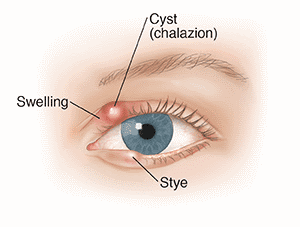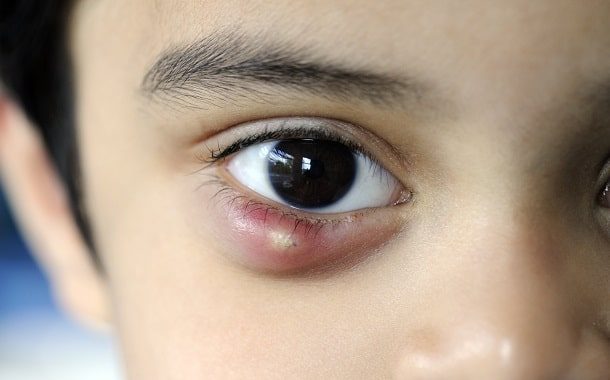How Much Does Chalazion Surgery Cost?
Last Updated on February 29, 2024
Written by CPA Alec Pow | Content Reviewed by ![]() CFA Alexander Popinker
CFA Alexander Popinker
Chalazion surgery is a common procedure to remove cysts on the eyelid caused by blocked oil glands. If you’ve been diagnosed with a chalazion that hasn’t responded to other treatments, you may be wondering what the surgery will cost.
This guide covers the typical chalazion surgery costs, how prices vary, insurance considerations, payment options, and tips for choosing the right surgeon. Read on for everything you need to know to make informed decisions and financially prepare for this eyelid procedure.
How Much Does Chalazion Surgery Cost?
The average cost of chalazion surgery in the US ranges from $300 to $800 per eyelid when performed in an outpatient setting. However, prices can go up to $1,500+ in some cases depending on the complexity. The surgery is done under local anesthesia and involves making an incision to drain the cyst’s contents.
Exact chalazion surgery costs depend on your location, provider, insurance coverage, and specific case factors. For example, prices tend to be higher in metropolitan areas and when done by ophthalmologists instead of general surgeons. Large, recurrent chalazions also cost more to treat surgically.
On top of the surgery fee, additional expenses can include:
- Preoperative consultations: $100 to $250
- Anesthesia fees: $150 to $500
- Medications and eye drops: $25 to $100
- Follow-up appointments: $100 to $200
According to MDsave, in Florida, the cost of a single chalazion excision under local anesthesia is available for approximately $500. This price includes both consultant and facility fees. The total cost will be confirmed after an initial consultation with a specialist in this area. The procedure typically takes around 1 hour to complete.
Chalazion and Its Treatment
A chalazion is a lump on the eyelid caused by a blocked Meibomian gland. It differs from a stye in that it occurs deeper in the lid. Chalazions often resolve on their own, but may persist and require medical treatment if they:
- Become very large or painful
- Cause blurred or impaired vision
- Don’t respond to warm compresses and massage
If you still have a swollen, tender chalazion after trying home remedies for 4-6 weeks, your eye doctor may suggest surgery.
The primary treatment for a stubborn chalazion is incision and drainage. This quick outpatient procedure involves:
- Numbing the eyelid with local anesthesia
- Making a small cut to release the trapped oils and fluids
- Scooping out residual gland contents
- Closing the incision with stitches
After surgery, you can expect some soreness and swelling as the wound heals. Following postoperative care instructions can promote proper healing within a week or two.
Factors Influencing the Cost of Chalazion Surgery
Several factors impact how much you’ll pay for chalazion surgery:
- Size and severity of the chalazion: More complex cases cost more to treat surgically.
- Provider and facility fees: Surgery done by an ophthalmologist in a hospital may cost $1200+, vs. $500 at an outpatient clinic.
- Geographic location: Prices tend to be higher in areas like New York and San Francisco.
- Surgeon’s credentials: Board-certified surgeons may charge more.
Understanding your options is key to finding affordable care.
Insurance Coverage and Chalazion Surgery
The good news is that most health insurance plans cover chalazion surgery if deemed medically necessary. This includes Medicare and Medicaid.
Coverage details depend on your specific plan, but in general:
- PPOs and HMOs cover 70-80% of the allowed amounts for the procedure after you meet the deductible.
- Your share of the cost may range from $150 to $800+ depending on your out-of-pocket maximum.
- You’ll need prior authorization to confirm benefits.
- Using in-network providers keeps your costs down.
Talk to your insurer to learn about your coverage and out-of-pocket responsibility for chalazion surgery.
Financing Options for Chalazion Surgery
 If insurance won’t cover your procedure or leaves you with large bills, financing options can make chalazion surgery more affordable:
If insurance won’t cover your procedure or leaves you with large bills, financing options can make chalazion surgery more affordable:
- Payment plans: Many providers let you pay in installments interest-free.
- Health savings account (HSA): You can withdraw funds from an HSA to cover out-of-pocket medical costs.
- Flexible spending account (FSA): FSAs can be used to pay for deductibles, copays, medications, and more.
- Some clinics and hospitals offer financial assistance or charity care programs based on financial need.
- Government aid like Medicaid can provide full or partial coverage if you qualify by income.
Discuss billing and financing up front so costs don’t catch you off guard.
Choosing the Right Surgeon and Facility
Selecting the right eye surgeon and facility for your chalazion removal is very important. Here are some tips:
- Look for an ophthalmologist or plastic surgeon who is board-certified and has expertise specifically in eyelid procedures.
- Hospital outpatient departments and accredited ambulatory surgery centers are safe options for chalazion surgery.
- Read reviews and ask people you trust for surgeon referrals. Meet with candidates to ask about their training, experience, and costs.
- Choose a provider you’re comfortable with to ensure the best experience.
We also have interesting articles about the cost of strabismus surgery, LASIK eye surgery, and Walmart eye exam.
Post-Surgery: Recovery and Care
Recovery from chalazion surgery is usually quick but you’ll have some discomfort and swelling at first. Follow your surgeon’s postoperative instructions on:
- Keeping the area clean and dry
- Using antibiotic eye drops or ointments
- Applying cold compresses to relieve pain and swelling
- Avoiding rubbing or irritating the eyelid
Call your doctor if you have worsening pain, vision changes, bleeding, or other issues. Most people can return to normal activities within a week.
Final Words
Chalazion surgery typically costs $300 to $800 per eyelid but can be higher based on the case complexity and choice of provider. While expensive, getting professional treatment for a persistent chalazion improves outcomes and prevents ongoing symptoms.
Find an experienced, affordable eye surgeon you trust and utilize insurance, financing options, and other cost-saving strategies for accessible care.
Frequently Asked Questions
Is chalazion surgery risky?
Chalazion surgery is considered a very low-risk procedure when performed by an experienced ophthalmologist or plastic surgeon. Like any surgery, risks include bleeding, infection, and scarring. But serious complications are rare in the hands of a skilled specialist using proper sterile technique.
Is chalazion removal worth it?
Most ophthalmologists recommend chalazion surgery for large, painful, or vision-impairing cysts that don’t get better with warm compresses and other nonsurgical treatments.
Removing stubborn chalazions provides significant symptom relief and restores normal eyelid appearance and function. The benefits tend to outweigh the costs for appropriate candidates.
What happens if chalazion is not removed?
Some small chalazions may disappear over time without treatment. But larger, chronic ones typically persist and continue causing irritation, discomfort, and eyelid swelling if not drained surgically. Left untreated, chalazions rarely cause any serious damage but can negatively impact vision and quality of life long-term.
Glossary
- Chalazion: A cyst in the eyelid caused by a blocked Meibomian gland, which produces oil for lubricating the eye.
- Insurance deductible: The amount you pay out-of-pocket for covered services before insurance kicks in.
- Copay: A fixed amount you pay per medical service after meeting the deductible.
- Coinsurance: Your share of costs after the deductible, often 20%.
- Flexible spending account (FSA): Savings account for medical expenses.
- Health savings account (HSA): Savings account for healthcare costs if enrolled in a high-deductible health plan.
- Ophthalmologist: Physician specializing in medical and surgical eye care.
Resources
American Academy of Ophthalmology – Chalazion information: https://www.aao.org/eye-health/diseases/what-is-chalazion
Healthcare Bluebook – Fair price information: https://healthcarebluebook.com/
American Optometric Association – Choosing an eye doctor: https://www.aoa.org/


Leave a Reply
Want to join the discussion?Feel free to contribute!